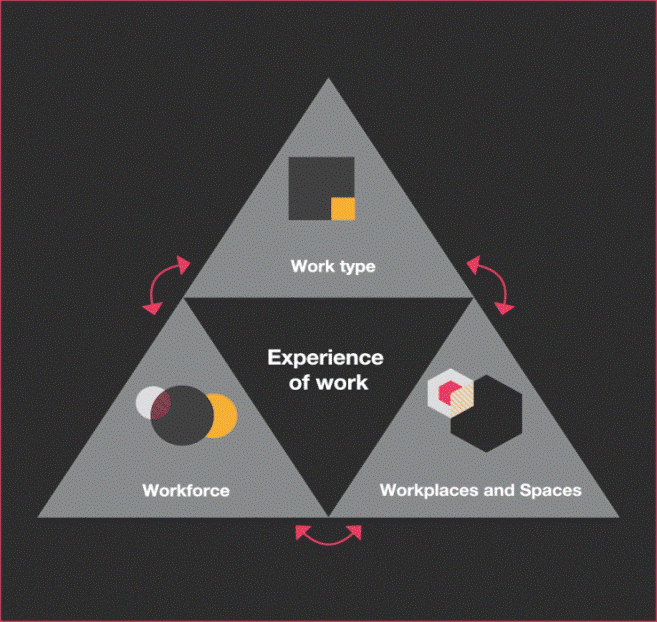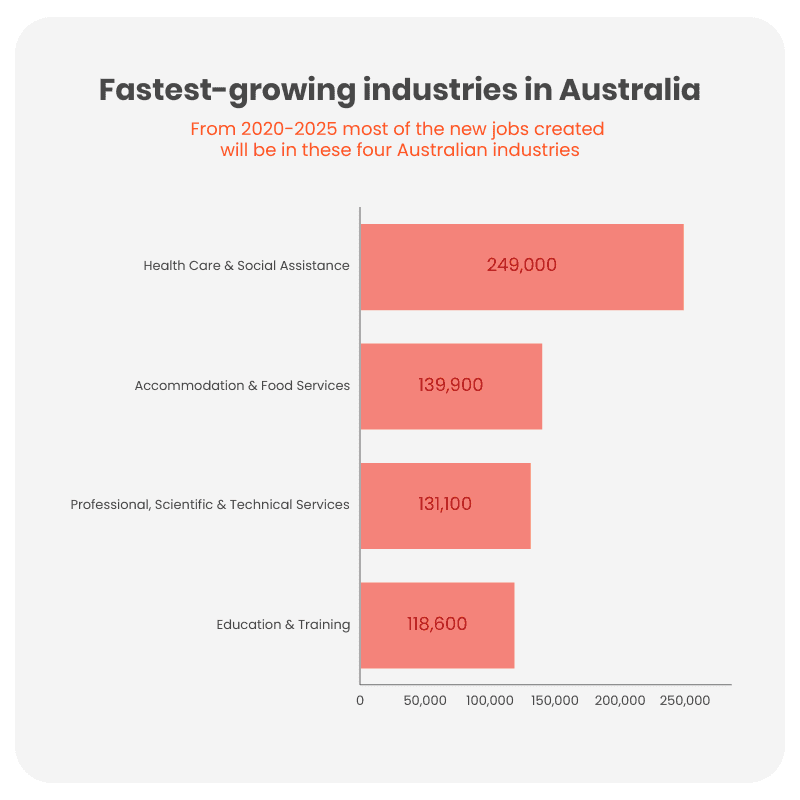Work culture changed in Australia during the COVID-19 pandemic. Over 40% of Australians worked from home during the first half of 2021. With the pandemic gone, several factors will shape the future of work in Australia. This guide discusses the future of work programs in the country by highlighting the challenges and opportunities of the work models.

Figure 1: Roadmap for the Future of Work
Remote and Hybrid Work Models: Redefining the Workforce
According to PWC Australia, around 74% of people prefer a combination of remote and face-to-face working. This means that the present scenario of work in Australia is related to both remote and hybrid work models. Such models have gained prominence over the years because of the following reasons:
- Advances in digital technology
- Requirement of flexible work arrangements
- Lessons learned during the COVID-19 pandemic
Challenges in Remote Work and Opportunities
Remote employees may need help to maintain a balance between personal and professional life. A few must work hard to detach from their work, often leading to burnout. Companies with hybrid work model types address this issue by encouraging employees to disconnect after work hours.
Moreover, remote employees often feel isolated. Many companies have tried resolving this through virtual team activities and open communication. The virtual world offers several opportunities for the future of work in Australia. It happens explicitly through team collaboration strategies.
The Australian Job Landscape
The change in job markets also reflects the future of work in Australia. Specific roles have become important across industries that are growing at an increased pace. Examples include healthcare, education, and food services industries.

Figure 2: Fastest-growing Industries in Australia
So, the fastest-growing industries offer the most in-demand jobs in the future Australia as mentioned below:
- ICT Business and Systems Analysts: Businesses increasingly depend on information and technology. It has led to a demand for experts who can apply data to solve business problems.
- Software and Applications Programmers: App and software developers are always in demand. So, they get several opportunities to use their technical and problem-solving skills creatively.
- Digital Marketing Specialists: Digital transformation has become the top investment goal of around 40% of Australian manufacturers in the post-pandemic era. This has led to a growing demand for digital marketing specialists nationwide.
Companies Leading the Way in Hybrid Work Models
Several Australian companies have embraced hybrid work models. These organisations are at the forefront of the future of work in Australia.
- Atlassian: The software giant allows employees to work from anywhere while maintaining a physical office presence. This particular approach helps increase creativity and innovation.
- Canva: The graphic design platform is known for its employee-centric work culture, with remote and hybrid work models options. It is an excellent example of how a company can adapt to changing paradigms, including the future of work program plans.
- Telstra: The telecommunications company offers various work arrangements to suit employee needs. Examples include effective audio-visual and video conferencing solutions for office meetings.
Future of Work in Australia
The future of work in Australia has evolved in 2023 and beyond. So, individuals and companies must adapt to new technologies to work in this landscape. The process will further help prioritise advancements in careers. So, striking the right balance between remote and in-person work will be important in achieving success in the future of work program plans across organisations.
Disclaimer
The Content, including but not limited to any articles, news, quotes, information, data, text, reports, ratings, opinions, images, photos, graphics, graphs, charts, animations, and video (Content), is a service of COLITCO LLP and is available for personal and non-commercial use only. The principal purpose of the Content is to educate and inform. The Content does not contain or imply any recommendation or opinion intended to influence your financial decisions and must not be relied upon by you as such. Some of the Content on this website may be sponsored/non-sponsored, as applicable, but is not a solicitation or recommendation to buy, sell or hold the stocks of the company(s) or engage in any investment activity under discussion. Colitco LLP is neither licensed nor qualified to provide investment advice through this platform. Users should inquire about any investments, and Colitco LLP strongly suggests they seek advice from a financial adviser, stockbroker, or other professionals (including taxation and legal advice) as necessary. Colitco, at this moment, disclaims any liabilities to any user for any direct, indirect, implied, punitive, special, incidental, or other consequential damages arising from any use of the Content on this website, which is provided without warranties. The views expressed in the Content by the guests, if any, are their own and do not necessarily represent the views or opinions of Colitco LLP. Some images/music used on this website are copyrighted to their respective owner(s). Colitco LLP does not claim ownership of any pictures displayed/music used on this website unless stated otherwise. The images/music that may be used on this website are taken from various sources on the internet, including paid subscriptions, or are believed to be in the public domain. We have used reasonable efforts to accredit the head wherever it was indicated or necessary.











